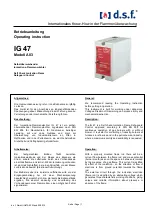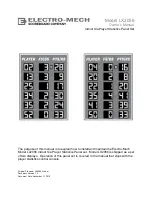
74
6
. Detailed settings for communications
6. Detailed settings for communications
6.1 Overview of communications
Using the communications features enables you to create programs on host devices (such as computers) to collect
the data measured by this product and to change its settings.
Each circuit on this product is allocated different communications addresses (numbered in order). (
Even if you connect several of these products on the same RS-485 line, all of the circuits need to be allocated
different communications addresses.
(
59)
Circuits are identified by their communications addresses. These are indicated in the address maps in "
6.4 Address
" and the addresses for each circuit are all the same.
You can use the Modbus and CompoWay/F protocols for communication.
■
Communications specifications
* Default values are underlined.
■
Transmission procedure
The host device (a computer, for example) sends the command frame and model KM-N2 sends the response frame
that corresponds to the command content. So 1 response frame is sent in response to one command frame. The
command frame and response frame act as follows.
Communications
protocols
Modbus
CompoWay/F
Transmission
connections
Multi-drop (1:N connection)
Communication system
2 line half duplex
Sync method
Asynchronous
Baud rate
2.4, 4.8, 9.6, 19.2, 38.4kbps
Transfer code
Binary
ASCII
Data bit length
8 bits (fixed)
7 or 8 bits
Stop bit length
With parity: 1 bit
Without parity: 2 bits
1 or 2 bits
Error detection
Vertical parity (none, odd, even)
Check code: CRC-16
Vertical parity (none, odd, even)
Check code: BCC
Flow control
None
Interface
RS-485
Retry function
None
Communication
response
Transmission wait time
0 to 99 (ms), Default 20 (ms)
Transmission buffer
230 (byte)
Command frame
Command frame
Response frame
Allow 2ms or more waiting time on the host computer after receiving the
response before sending out the next command.
















































